VISION GOALS 2030
SOIL
&


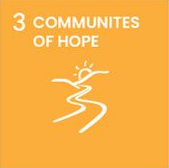
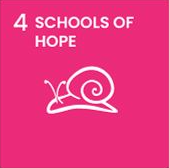
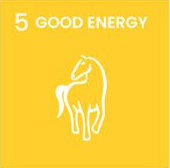

SOUL
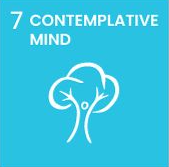

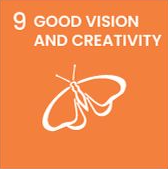
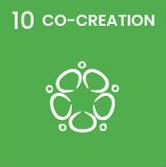
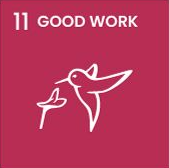
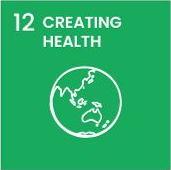
Focusing on creating health is not so good for business as a disease prevention focus to health as commonly found with the big pharmaceutical industry, after all, ahealthy patient is not a good customer!
Many diagnosed chronic diseases can be traced back to nutritional deficiencies in the food we eat and many of these issues can therefore be addressed by simply eating good food from good soil for good health.
Taking care of our health includes how we think and feel, the food and fluids we put into our bodies, the work we are engaged in, daily exercise as well as the environment we are surrounding ourselves in. If we are open to accepting feedback in all areas of life that we experience, we can begin to apply self-regulation in improving any ofthese aspects of our life as we choose.
We can begin with…
Eating Good food from Good soil for Good health.
Creation seems to love diversity which is a stark contrast to the homogeneity of today's mass production systems. Within nature each part of creation is differentiated, unique and fruitful, multiplying after its own kind and yet, each part is incomplete without the whole; everything exists in interdependent relationships.
Within the context of work, a wider diversity of it locally would reduce the reliance on market systems, and as a result bolster household and community self-reliance by providing a greater range of goods and services.
Some Good Questions for Good Work to ask:
- Does the work I am engaged in produce necessary and useful goods and services?
- Does the work I am engaged in enable me to develop my gifts and skills bringing satisfaction and feeding the soul?
- Does the work I am engaged in enable me to serve and collaborate with other people?
Don't put all your eggs in one basket
Within nature, from the internal workings of organisms to whole ecosystems, we find that the connections between things are as important as the things themselves.
We seem to have a cultural disposition to see and believe more in competitive relationships than we do co-operative and symbiotic ones.
"Many hands make light work" suggests that when we work together 1+1 has the potential to enlarge the multiplication of possibility and equal 11! To make this possible, we need too take charge of our environment and aim to create environments of constructive
interference rather than ones of destructive interference, the whole will then be greater than the sum of its parts and multiplication of potential will occur!
Many hands make light work
The symbol of the butterfly is a positive image of transformative change in nature, from its previous life as a caterpillar. This reflects the common patterns found within cycles of nature, that in order for something new to come, something must die or be let go of.
From the contemplative mind we find ourselves less stressed and more relaxed, we can begin to see the forest for the trees, we are now in the best place to harness the power of our imagination to begin to envision the world we want to see rather than the one we don't.
The seed of possibility is already within us, we just need
to give birth to it, and then water and nurture that seed as you would a plant.
Vision is not seeing things as they are but as they will be
"Can't see the forest for the trees" reflects an understanding about the relation between how we see ourselves as human beings, who we believe ourselves to be and how this will effect our behaviour in the world.
We need to be able to see the forest for the trees so as to remain informed and discerning in the choices and decisions we make.
SOVEREIGNTY CHECK………..
Imagine you are playing the game of monopoly and your piece on the board was a ship or boat. Would you ever say whilst playing the game that the piece on the board, the ship or boat was you? No, clearly you know you are the one playing the game and moving your
piece the ship or boat around the board and playing the game.
When it comes to an understanding of ourselves and our relations and interactions with the legal society and government however, we frequently conflate our identity as men/woman with that piece on the board namely our legal fiction.
Can't see the forest for the trees?
By taking the time to engage with nature we can design solutions that suit our particular situation. This is not something that is generated in isolation however, but through a continuous and reciprocal interaction with the subject. To be open to this possibility we need to be able to first slow down and relax. This is not possible however when we are too busy and stressed out.
A contemplative mind is therefore is needed to enable us to stand back and appreciate what it means to first to be a human being before a human doing. From this stand point we will then have a very different lens to look out into the world with.
Beauty is in the eye of the beholder
If we can take advantage of opportunities while conditions are good and to collect resources when they are abundant we can use them in times of need.
Water can be saved and stored in liquid form for many practical uses such as for energy generation, rainwater for gardens and plants, agriculture for livestock, hydroelectricty, building a resovoirs of water behind a dam to name but a few.
This reminds us of it's fundamental necessity for life but also that by design, water sustains and supports life in so many ways, therefore catching it and storing it for its many forms of energy usage needs to be deeply respected.
Make hay whilethe sun shines because…
when the well is dry, we know the worth of water.
This principle, use and value renewable resources invites us to use and value nature's abundance to reduce the need for non-renewable resources.
A good use of renewable energy would prioritise a diverse range of small renewable energy solutions, such as solar, wind, and hydropower over our current predominant reliance on the use of fossil fuels. The aim would be to to integrate these renewable resources into the design of our homes, gardens, farms, and commu- nities, to create regenerative systems that meet human needs while enhancing ecological health and resilience.
Let nature take its course
When seed is scattered over the ground, some seed will germinate and produce fast growth whilst others will germinate and grow more slowly, taking longer to establish deeper roots but as a result will produce a more flourishing healthy plant in the longer term.
In the same way, children develop at different stages and rates, not just physically but also mentally and emotionally. A School of Hope would emphasize a more wholistic approach to learning made up of head (intellectual engagement) heart (emotional intelligence) and hands (practical action) over the predominant educational model in which reading, writing and arithmetic are given prominence in order to prepare children for the market economy.
Slow and steady wins the race
The icon of the sun coming over the horizon with a river in the foreground shows us a world composed of edges. The interface between things is often where the most interesting and fertile ground is. These places can be the most valuable, diverse and productive elements in a system as it can also be with human relationships. When people decide to come together and value the edges and margins, with mutual respect and a desire to work together, there is hope, and where there is hope there is always possibility.
Don't think you are on the right track just because it's a well-beaten path
A farm of Hope is regenerative by design. Waste and pollution are designed out of the system, products and materials are kept in use, saving money on costs. These surplus resources from one part of the system are used in another rather than being thrown away, they stay in the system. Other by-products of regenerative farms are, better overall health through improved nutrition associated with the food produced from healthy soils, eliminatating pesticide use and also the enrichment of the environment.
Products are made and sold on the farm, from sun to soil to table.
Fact: 78% higher profitability from insecticidefree regenerative arable farms, compared to conventional farms.
A stitch in time saves nine Waste not, want not
January is a time to start planning how you will obtain your yield for the forthcoming growing season.
Growing financial and social hardships in the last few years have led to over 9 million people in the UK becoming vulnerable to reliance on some form of food aid.
We need to rearranging our food systems as was the case in the dig for victory campaign during the second world war and in doing so we can begin to address these issues. We need a home grown, hand crafted organic form of production and less mass production and more production by the masses!
People march to sway the Government to make eco laws to protect the planet. What about a law that says you have to grow a vegetable garden?
FACT:
There are approximately 2,000 square miles (approximately half a million hectares) of household gardens in the UK. If half of these were used to grow fruit and vegetables it would produce 7.5 million tonnes of crops per year which is more than the 6.9 million tonnes UK households eat in a year.
YOU CAN'T WORK ON AN EMPTY STOMACH